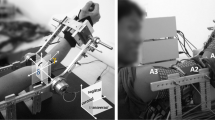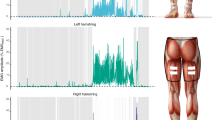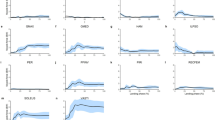Abstract
Disturbed motor control due to a spinal cord lesion is generally considered to be the cause of unusual standing utilized by those people suffering from spinal cord injury (SCI). Electromyographic (EMG) leg muscle activity during quiet standing was analyzed in four functional groups of SCI subjects and compared to the data of healthy people. A rating system for visual assessment of the stripchart recording was developed and its adequacy was confirmed by comparison of the rating system with computerized integrated EMG values of some of the recordings. The division of 47 subjects into functional groups was based on their ambulatory capabilities ie a non-support group, crutches, cane and walker user groups. Mean total muscle EMG activity was the highest in the group of subjects standing without support and it was significantly higher when compared to the other groups including the control group. Comparison between more and less active legs within each group showed significant differences in the non-support and crutches groups, whereas cane, walker and control groups showed nearly symmetric EMG patterns during standing. Analysis of the contribution of single muscles to the asymmetry of standing showed significantly higher activity in hamstring and triceps surae muscles than in other muscles in the non-support group. No significant differences in the activity of single muscles compared to their contralateral pair between more and less active leg were obtained in the remaining groups. It is evident, however, that different support devices used by SCI subjects greatly influence EMG patterns of postural muscles. The present findings suggest that disturbed conduction in the spinal cord is related to altered motor strategies employed by SCI subjects in attempts to perform the same volitional act as before the injury.
Similar content being viewed by others
Log in or create a free account to read this content
Gain free access to this article, as well as selected content from this journal and more on nature.com
or
References
Houtz S J . Influence of gravitational forces on function of lower extremity muscles. J Appl Physiol 1964; 19: 999–1004.
Nashner L M . Adapting reflexes controlling the human posture. Exp Brain Res 1976; 26: 59–72.
Nashner L M . Fixed patterns of rapid postural responses among leg muscles during stance. Exp Brain Res 1977; 30: 13–24.
Alstermark B, et al. Integration in descending motor pathways controlling the forelimb in the cat. Exp Brain Res 1981; 42: 299–318.
Alstermark B, et al. Motor recovery after serial spinal cord lesions of defined descending pathways in cats. Neurosci Res 1987; 5: 68–73.
McKay W B, Metman L V, Dimitrijevic M M, Sherwood A M, Dimitrievic M R . Locomotor patterns in humans with impaired spinal cord functions. Phys Med and Rehab Clin of North Am 1993; 4(4): 707–730.
Nesmeyanova T N . Physiological aspects in the restoration of motor functions of spinal cord injury patients. In: Kao CC, Bunge RP, Reier PJ, editors. Spinal cord reconstruction. 1983; 1st ed. Raven Press, New York: 475–481.
Basmajian J V, Boyd W H . An electromyographic study of certain muscles of the leg and foot in the standing position. Surg Gynec and Obst 1954; 98: 662–666.
Basmajian J V, Griffin W R . Function of anconeus muscle an electromyographic study. J Bone and Joint Surg 1972: 54-A: 1712–1714.
Hirose K, Uono M, Sobue I . Quantitative electromyography comparison between manual values and computer ones on normal subjects. Electromyogr Clin Neurophysiol 1974; 14: 315–320.
Joseph J, Nightingale A . Electromyography of muscles of posture: leg muscles in males. J Physiol 1952; 117: 484–491.
Joseph J, Nightingale A, Williams P L . A detailed study of the electric potentials recorded over some postural muscles while relaxed and standing. J Physiol 1955; 127: 617–625.
Kelton L W, Wright R D . The mechanism of easy standing by man. Austral J Exper Biol and M Sc 1949; 27: 505–515.
Floyd W F, Silver P H S . Electromyograph study of standing in man: thigh and leg muscles. J Physiol 1950; 111: 22P.
Goff C W . Orthograms of posture. J Bond Jt Surg 1952: 34A: 115–122.
Schieppati M, and Nardone A . Free and support stance in Parkinson's disease: the effect of posture and “postural set” on leg muscle responses to perturbation, and its relation to the severity of the disease. Brain 1991; 114: 1227–1244.
Berger W, Horstmann G, Dietz V . Spastic paresis: impaired spinal reflexes and intact motor programs. J Neurol Neurosurg Psychiatry 1988; 51: 568–571.
Author information
Authors and Affiliations
Rights and permissions
About this article
Cite this article
Lewko, J. Assessment of muscle electrical activity in spinal cord injury subjects during quiet standing. Spinal Cord 34, 158–163 (1996). https://doi.org/10.1038/sc.1996.28
Issue date:
DOI: https://doi.org/10.1038/sc.1996.28



